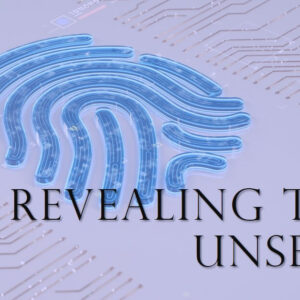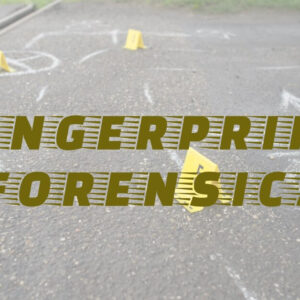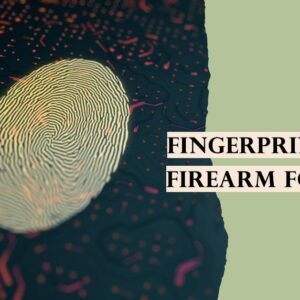Fingerprints have revolutionized the world of crime-solving for over a century. Originally used for identification purposes, they have now become a vital part of understanding and apprehending criminals.
Think of each fingerprint as a valuable piece of evidence, like a thread in a detective’s search for the truth. This blog post will delve into the evolution of fingerprints, from a basic identification method to a sophisticated crime-solving technique.
In the late 1800s, Sir Francis Galton played a significant role in elevating the importance of fingerprints. Today, advanced technology enables us to match fingerprints quickly and accurately. Throughout this journey, we will explore how fingerprints have transformed from simple markers to powerful storytellers, unveiling secrets and assisting investigators in solving complex crimes.
Join us as we discover the true power of fingerprints – not only as personal identifiers but also as indispensable tools in the pursuit of justice.
Fingerprinting in Crime Scene Investigations
Fingerprints are crucial in Crime Scene Investigation (CSI) as they connect people to specific places and incidents. Whether it’s a burglary, assault, or homicide, collecting and analyzing fingerprint evidence is essential in solving the mystery of what happened.
1. Identification and Linking Suspects
Fingerprinting is a method used to determine the identity of people who might have been at the scene of a crime. Each person has unique fingerprint patterns, which makes them a dependable way to connect suspects to criminal actions.
When investigators discover fingerprints on a weapon, a door, or any surface connected to the crime, it establishes a direct connection between the person and the location of the incident.
2. Establishing Timelines
Analyzing the arrangement and order of fingerprints at a crime scene can help investigators establish timelines. This valuable information allows them to understand the movements of the people involved, which is essential for reconstructing the events before and after the crime was committed.
3. Crime Scene Reconstruction
Fingerprint patterns are useful in reconstructing the crime scene. The position and direction of fingerprints on surfaces or objects give important hints about what both the victims and criminals did. This reconstruction assists investigators in grasping the details of the incident, leading to a better understanding of the crime.
4. Exclusion and Inclusion
Fingerprinting serves a dual purpose: identifying the guilty and ruling out the innocent. If fingerprints discovered at a crime scene do not match those of a suspect or victim, it aids in eliminating them as potential contributors. This exclusion process plays a crucial role in narrowing down the investigation’s focus.
5. Evidence Corroboration
Fingerprint evidence frequently supports criminal cases. When fingerprints match with other evidence like DNA or eyewitness testimonies, it reinforces the case against a suspect. This comprehensive approach boosts the trustworthiness and validity of the investigative findings.
6. Cold Case Resolution
Preserved fingerprint evidence can be a valuable asset when leads have gone cold. With technological advancements, investigators can use modern techniques to re-examine old evidence. This could potentially help identify and apprehend perpetrators who were previously difficult to catch.
Fingerprinting and Criminal Profiling
Fingerprinting and criminal profiling work together to uncover the secrets hidden within crime scenes. Fingerprint analysis goes beyond identification and helps investigators create detailed profiles of unknown criminals. Fingerprints are unique not only in their patterns but also in the valuable information they provide about the individuals who left them behind.
In the complex relationship between forensic science and criminal psychology, fingerprinting plays a crucial role. Leaving a fingerprint at a crime scene is a deliberate form of communication by the perpetrator. Criminal profilers analyze this act to understand the motivations, personality traits, and even emotions of the offender. A fingerprint’s placement can signify confidence, impulsivity, or a desire for recognition.
Fingerprint analysis is an essential part of criminal profiling as it involves not only identifying individuals but also interpreting their behavioral tendencies. For example, the precision of a fingerprint’s placement can reveal a meticulous personality, while smudged prints may indicate a hurried and less cautious criminal. By integrating fingerprint analysis into the broader context of criminal behavior, profilers can create comprehensive and accurate psychological profiles.
Furthermore, advancements in technology have revolutionized fingerprinting and profiling. Automated systems with advanced algorithms expedite the analysis process and improve the accuracy of matching prints. This seamless collaboration between investigators and profilers, aided by technology, allows them to uncover patterns and connections that may go unnoticed by the human eye.
Despite the valuable role that fingerprinting and criminal profiling play in law enforcement, there are still challenges to overcome. Fingerprint analysis has its limitations due to factors like the environment and human error, which require a careful approach.
However, the connection between fingerprinting and criminal profiling continues to strengthen, offering investigators valuable insights into the thoughts of criminals. As technology and methods improve, this partnership remains crucial in solving complex cases and ensuring justice is served.
Conclusion
Fingerprinting has always been an essential tool in the fascinating world of criminal profiling. From its modest origins to our state-of-the-art technology, fingerprints have consistently played a crucial role in unraveling the mysteries of crime scenes.
As technology progresses and forensic techniques develop, fingerprinting will undoubtedly remain a pivotal aspect of criminal profiling, offering invaluable insights into the minds of individuals who make their mark in the realm of crime.






